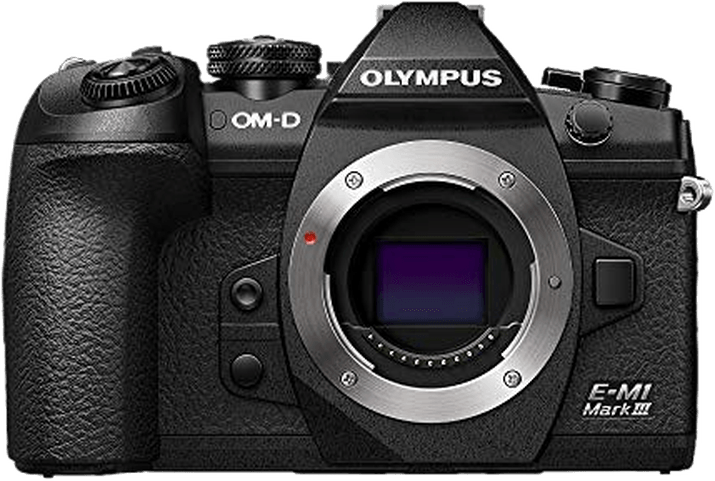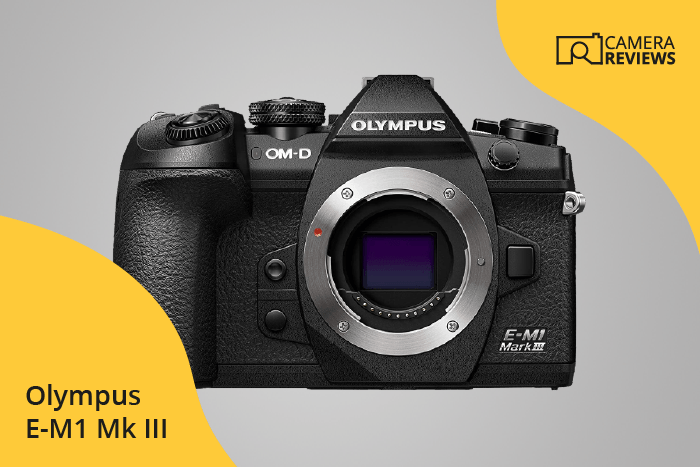Olympus OM-D E-M1 Mark III Specs and Scores

The Olympus OM-D E-M1 Mark III receives a score of 72/100, reflecting its solid performance in the mirrorless camera category. Announced on February 12, 2020, and released the same year, this camera retails for $1,799. Measuring 134 x 91 x 69mm and weighing 580g, the E-M1 Mark III is a compact and lightweight option for photographers.
These specifications indicate that the Olympus OM-D E-M1 Mark III remains competitive in today’s market, offering a balance between quality and portability. This camera is a reliable choice for those seeking a high-performing mirrorless option.
Olympus OM-D E-M1 Mark III Overview and Optics
The Olympus OM-D E-M1 Mark III receives a score of 68/100 for optics. With 20 megapixels and a shooting speed of 60, it offers decent performance in the current market. The camera features a CMOS sensor and a TruePic IX processor, contributing to the DXOMARK score of 80 for the sensor.
This camera has a Micro Four Thirds sensor size and a Micro 4/3 lens mount, making it compatible with a variety of lenses. Its image stabilization ensures sharp images even in challenging conditions. The aspect ratio of 4:3 is standard for this type of camera.
Considering the specifications, the Olympus OM-D E-M1 Mark III provides satisfactory optics performance. While it may not be the market leader, it is a reliable choice for photographers seeking a versatile camera with good image quality.
Olympus OM-D E-M1 Mark III Video Performance
The Olympus OM-D E-M1 Mark III achieves a video score of 83/100. This camera boasts a maximum video resolution of 4K and dimensions of 4096 x 2160, enabling users to capture high-quality footage. The camera also supports a maximum video frame rate of 60fps, providing smooth and fluid motion in videos.
In today’s market, these specifications are competitive, as 4K resolution has become the standard for professional videography. The addition of time-lapse functionality built into the camera further enhances its appeal for video enthusiasts.
The Olympus OM-D E-M1 Mark III offers strong video capabilities, making it an attractive choice for those seeking a camera with excellent performance in both photography and videography.
Olympus OM-D E-M1 Mark III Features and Benefits
The Olympus OM-D E-M1 Mark III features a score of 83/100, showcasing its robust capabilities. Its 3-inch screen size offers users a comfortable viewing experience, while the screen resolution of 1,037,000 dots ensures sharp and clear image previews. The presence of a touchscreen enhances user interaction, and the flip screen adds versatility to shooting angles.
Despite lacking GPS functionality, the camera compensates with both WIFI and Bluetooth connectivity, making it easy to transfer files and control the camera remotely. In today’s market, these specifications place the Olympus OM-D E-M1 Mark III as a strong contender among other cameras in its class.
The Olympus OM-D E-M1 Mark III proves to be a reliable and versatile camera, offering users a combination of advanced features and connectivity options. Its performance in the market reflects its high-quality output and ease of use.
Olympus OM-D E-M1 Mark III Storage and Battery
The Olympus OM-D E-M1 Mark III has a storage and battery score of 71/100. It is equipped with two memory card slots that accept SD, SDHC, and SDXC cards. One of these slots is UHS-II compatible, ensuring faster data transfer rates. This dual-slot system allows for a flexible and reliable storage solution.
Additionally, the camera’s battery life is 420 shots per charge, using the BLH-1 battery type. The device also supports USB charging, making it convenient for on-the-go use. While there are cameras with longer battery life available, the OM-D E-M1 Mark III’s battery performance is respectable in the current market.
To sum up, the Olympus OM-D E-M1 Mark III offers a solid storage solution and decent battery life, making it a reliable choice for photographers.
Olympus OM-D E-M1 Mark III Alternatives
Do you want to know how the Olympus OM-D E-M1 Mark III compares to its competitors? Have a look at the most popular comparisons for this camera below:
- Fujifilm X-T4 vs Olympus OM-D E-M1 Mark III
- Canon EOS R7 vs Olympus OM-D E-M1 Mark III
- Olympus OM-D E-M1 Mark II vs OM-D E-M1 Mark III
- Fujifilm X-T5 vs Olympus OM-D E-M1 Mark III
- Olympus OM-D E-M1 Mark III vs OM-D E-M5 Mark III
- Fujifilm X-S10 vs Olympus OM-D E-M1 Mark III
Olympus OM-D E-M1 Mark III FAQ
Does the Olympus OM-D E-M1 Mark III Have Built-in Image Stabilization?
Yes, the Olympus OM-D E-M1 Mark III features an advanced 5-axis image stabilization system, providing exceptional stability for both still images and video recording.
Does the Olympus OM-D E-M1 Mark III Support 4K Video Recording?
Yes, the Olympus OM-D E-M1 Mark III supports 4K video recording at 30 frames per second, allowing users to capture high-quality, ultra-high-definition footage.
What Size Sensor Does The Olympus OM-D E-M1 Mark III Have?
The Olympus OM-D E-M1 Mark III is equipped with a Micro Four Thirds sensor, providing excellent image quality in a compact and lightweight camera body.
Does the Olympus OM-D E-M1 Mark III Have a Dual Memory Card Slot?
Yes, the Olympus OM-D E-M1 Mark III features dual memory card slots, allowing users to store more images and videos, as well as offering backup and overflow storage options.
Does the Olympus OM-D E-M1 Mark III Have a Touch Screen?
Yes, the Olympus OM-D E-M1 Mark III comes with a 3-inch touch screen, allowing users to easily navigate through menus, zoom in on images, and select focus points.
Does the Olympus OM-D E-M1 Mark III Have Wi-Fi and Bluetooth?
Yes, the Olympus OM-D E-M1 Mark III is equipped with both Wi-Fi and Bluetooth capabilities, allowing for seamless wireless image transfer and remote camera control.
Does the Olympus OM-D E-M1 Mark III Have GPS?
No, the Olympus OM-D E-M1 Mark III does not have a built-in GPS feature. However, users can still geotag their images using a compatible smartphone or external GPS device.
Is the Olympus OM-D E-M1 Mark III Weather Sealed?
Yes, the Olympus OM-D E-M1 Mark III is weather-sealed, providing protection against dust, moisture, and freezing temperatures, making it suitable for use in a variety of shooting conditions.
Does the Olympus OM-D E-M1 Mark III Have a Built-in Flash?
No, the Olympus OM-D E-M1 Mark III does not have a built-in flash. However, it does have a hot shoe for attaching an external flash unit if needed.

